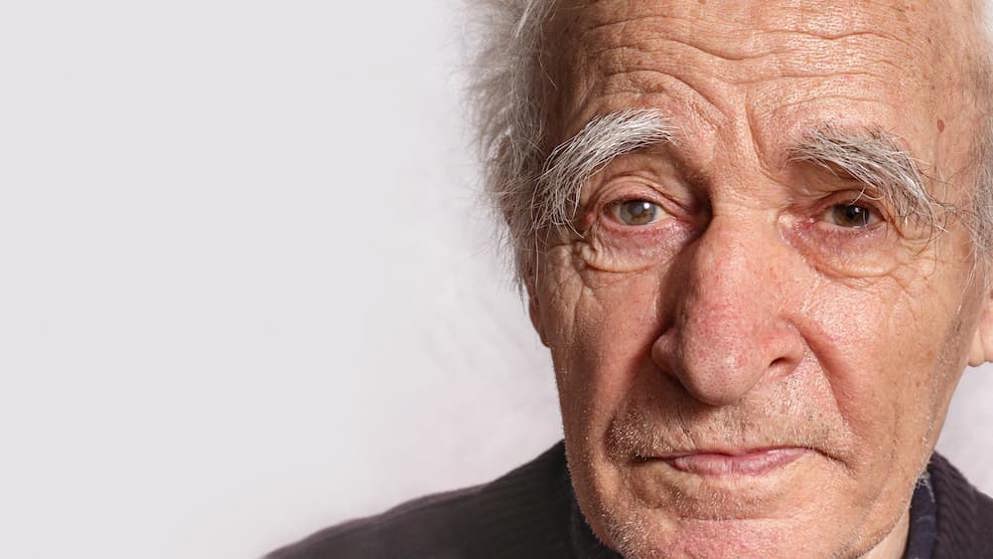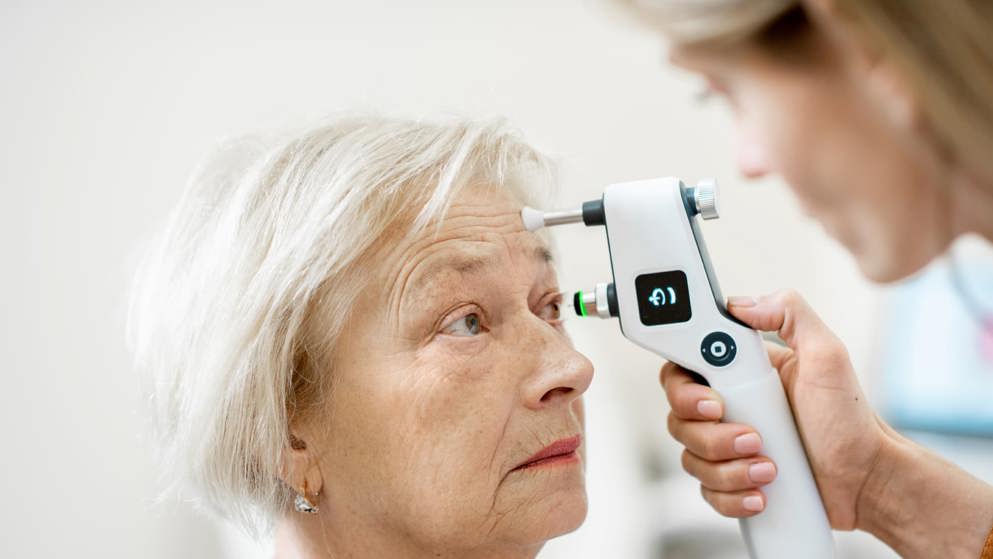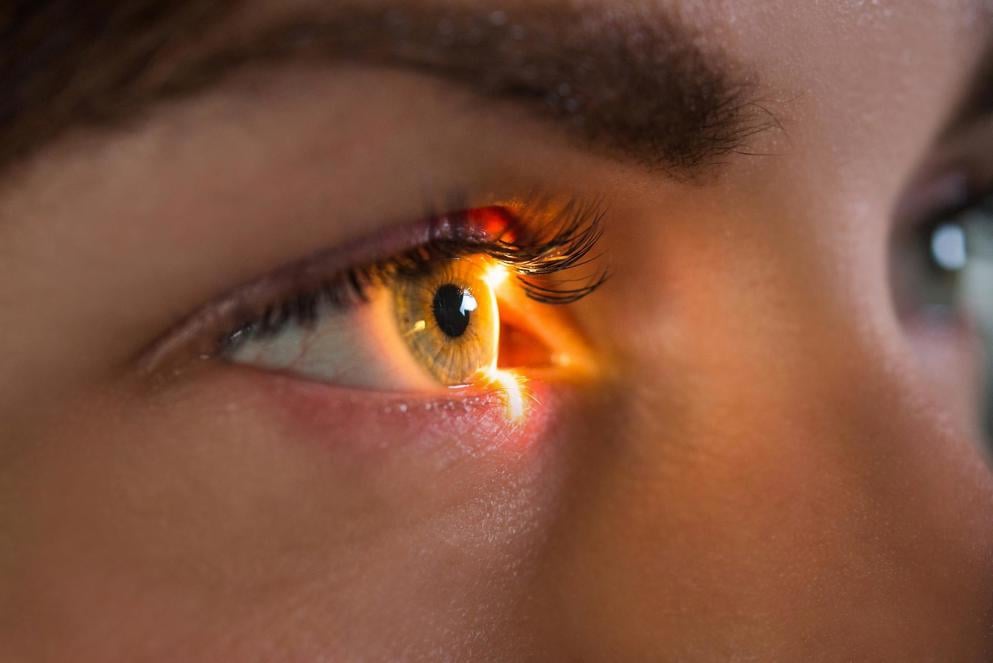
Glaucoma
of interest
are looking at
saved
next event
What are the unmet patient needs in glaucoma?
Known as the ‘silent thief of sight’, glaucoma is the leading cause of irreversible blindness globally1,2. Glaucoma is essentially asymptomatic in its early stages3, with the disease process believed to begin up to 20 years before diagnosis is possible2, by which time irreversible visual field loss may have already occurred4. Most people with glaucoma are undiagnosed and not receiving treatment3.
Reliable diagnosis of early-stage glaucoma remains an unmet clinical need5.
There are challenges with using intraocular pressure (IOP) values to detect glaucoma and guide management6,7, which add to the difficulty of early and accurate diagnosis. Socioeconomic factors also impact diagnosis and are associated with greater glaucoma burden1,8. Unmet needs in glaucoma treatment also exist, with challenges presented by unequal access to treatment3, poor compliance and high ongoing costs3, a lack of pharmacological treatment strategies that are IOP-independent and neuroprotective5,9, limited options for minimally invasive surgery, limited access to monitoring of treatment response in resource-limited settings and remote communities3, and rehabilitation not being a routine component of eye care3.
How common is glaucoma?
Glaucoma affects over 60 million people globally, and it is projected that there will be 112 million cases in 20401,2,9. The most common glaucoma subtype is primary open angle glaucoma, with an estimated 52.68 million cases globally in adults aged 40–80 years in 2020, and 79.76 million cases projected for 204010,11. It has been estimated that over half of all glaucoma cases in the world are undetected on average, with cases are predicted to rise in the coming decades1.
What are the glaucoma risk factors?
The major glaucoma risk factors depend on the subtype. In primary open angle glaucoma (POAG), the risk factors for onset are9:
- Older age
- Raised intraocular pressure
- Race/ethnicity (with highest prevalence in people of black race)
- History of POAG in first-degree relative
- Moderate-high myopia
- Low diastolic blood pressure
- Thinner central corneal thickness (not an independent prognostic risk factor in univariate analysis)
The risk factors for POAG progression are9:
- Older age
- Raised intraocular pressure
- Presence of disc haemorrhages
- Thinner central corneal thickness (not an independent prognostic risk factor in univariate analysis)
The risk factors for primary angle closure glaucoma are9:
- Older ageRace/ethnicity (with higher prevalence in South and East Asians)
- Female sex
- Family history
- Hypermetropia
Of all the risk factors, intraocular pressure is the only risk factor known to be modifiable12.
What are the recommended treatments for glaucoma?
Lowering IOP is the only proven method to preserve visual function9,13. The aim of glaucoma therapeutic management is to lower the IOP to reduce the rate of visual field deterioration enough to maintain the patient’s quality of life. Therefore, determining target IOP is a key feature of treatment, and it is important to set this goal at diagnosis, as well as review and modify it if the disease progresses, or if ocular or systemic comorbidities develop9. Although treatment cannot restore lost visual function, it can prevent further vision loss9.
For most forms of open angle glaucoma, laser trabeculoplasty or topical medications can be used as initial treatment, with prostaglandin analogues (PGAs) commonly recommended as first-choice treatment9. Initiating treatment with monotherapy is recommended unless the patient has very high IOP and severe disease, and surgery can be considered for patients who present with advanced visual field loss9. PGAs are also recommended as first-choice treatment of primary angle closure glaucoma following interventions to widen the anterior chamber angle9.
If the patient does not tolerate initial therapy or if it is not effective, switching to another monotherapy is recommended, and laser trabeculoplasty can also be considered9.
If monotherapy is effective and well-tolerated, but fails to reduce the IOP to target, an additional drug of a different class can be considered9. A third agent can be considered in patients whose IOP is not adequately controlled by two agents, and if IOP control continues to be inadequate on three agents, laser or incisional surgery can be considered9.
Considerations for patient management
The average glaucoma patient is treated for 20 years14. During this treatment continuum, many considerations need to be made for ongoing optimal management including the patient’s existing and arising comorbidities, their information needs and quality of life3,9. Thanks to developing technologies such as telemedicine, mobile health, artificial intelligence, distance learning and low-cost retinal cameras, improvements in eye health are expected over the next decade3.
Global eye health report summary
Read about global concerns surrounding vision impairment and proposed strategies to ensure suitable eye care across healthcare systems.
Related news and insights
Related Guidelines
References
- Soh Z, Yu M, Betzler BK, Majithia S, Thakur S, Tham YC, et al. The Global Extent of Undetected Glaucoma in Adults: A Systematic Review and Meta-analysis. Ophthalmology. 2021;128(10):1393-404.
- Shamsher E, Davis BM, Yap TE, Guo L, Cordeiro MF. Neuroprotection in glaucoma: old concepts, new ideas. Expert Review of Ophthalmology. 2019;14(2):101-13.
- Burton MJ, Ramke J, Marques AP, Bourne RRA, Congdon N, Jones I, et al. The Lancet Global Health Commission on Global Eye Health: vision beyond 2020. The Lancet Global Health. 2021;9(4):e489-e551.
- Nuzzi R, Tridico F. Glaucoma: Biological trabecular and neuroretinal pathology with perspectives of therapy innovation and preventive diagnosis. Front Neurosci. 2017;11:494.
- Cursiefen C, Cordeiro F, Cunha-Vaz J, Wheeler-Schilling T, Scholl HPN. Unmet Needs in Ophthalmology: A European Vision Institute-Consensus Roadmap 2019–2025. Ophthalmic Res. 2019;62(3):123-33.
- Chan MPY, Broadway DC, Khawaja AP, Yip JLY, Garway-Heath DF, Burr JM, et al. Glaucoma and intraocular pressure in EPIC-Norfolk Eye Study: cross sectional study. BMJ. 2017;358:j3889.
- Bonomi L, Marchini G, Marraffa M, Morbio R. The relationship between intraocular pressure and glaucoma in a defined population. Data from the Egna-Neumarkt Glaucoma Study. Ophthalmologica Journal international d'ophtalmologie International journal of ophthalmology Zeitschrift fur Augenheilkunde. 2001;215(1):34-8.
- Wang W, He M, Li Z, Huang W. Epidemiological variations and trends in health burden of glaucoma worldwide. Acta Ophthalmol (Copenh). 2019;97(3):e349-55.
- European Glaucoma Society Terminology and Guidelines for Glaucoma, 5th Edition. Br J Ophthalmol. 2021;105(Suppl 1):1-169.
- Zhang N, Wang J, Li Y, Jiang B. Prevalence of primary open angle glaucoma in the last 20 years: a meta-analysis and systematic review. Sci Rep. 2021;11(1):1-12.
- Tham YC, Li X, Wong TY, Quigley HA, Aung T, Cheng CY. Global prevalence of glaucoma and projections of glaucoma burden through 2040: a systematic review and meta-analysis. Ophthalmology. 2014;121(11):2081-90.
- Stein JD, Khawaja AP, Weizer JS. Glaucoma in Adults—Screening, Diagnosis, and Management: A Review. JAMA. 2021;325(2):164-74.
- Kusuhara S, Nakamura M. Ripasudil Hydrochloride Hydrate in the Treatment of Glaucoma: Safety, Efficacy, and Patient Selection. Clin Ophthalmol. 2020;14:1229-36.
- Quigley HA. 21st century glaucoma care. Eye (Lond). 2019;33(2):254-60.


